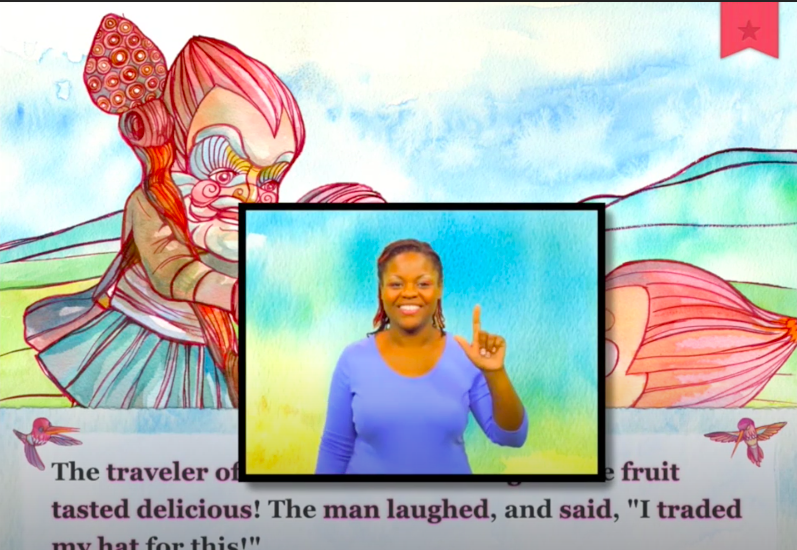For Melissa Malzkuhn, the best part of creating storybook apps in American Sign Language and English is seeing children’s reactions. “They retell the stories, or they pick up a sign or phrase, or they repeat something they find funny. It's incredible, always incredible and uplifting when you see kids learning, absorbing and enjoying,” she said.
Malzkuhn is the founder and creative director of Gallaudet University’s Motion Light Lab. Since 2013 her team has worked with Deaf storytellers and artists to create bilingual stories for their VL2 ASL Storybook Apps. Exposure to stories in ASL is essential for young Deaf students, she said. “ASL is their natural visual language, and they learn swiftly. You can see the foundations being built.”
But with schools across the country closed amid the COVID-19 outbreak, Deaf children have less access to such stories. About 73% of Deaf and Hard of Hearing children live in homes where family members do not regularly sign, according to a 2014 national survey by Gallaudet University. And according to Malzkuhn, many online educational resources being recommended to families right now are dependent on audio. Even when captions or transcriptions are available, Deaf children who are learning to read are unable to use those resources. “They need ASL access, and strong ASL models to develop literacy skills. With strong ASL skills, it bridges right into learning how to read and write,” Malzkuhn said.
That’s why, as schools across the country moved to distance learning in March, her team opened free access to their storybook apps. They weren’t alone in their efforts. Educators and advocates across the Deaf community have curated lessons, created storytime videos and organized events to support Deaf students’ literacy. “It's been fantastic seeing how the Deaf community has rallied together through this, with our creativity, storytelling and our sense of community accountability for all Deaf children,” Malzkuhn said.
Here are six ASL resources to help Deaf students engage with books and storytelling during distance learning.
ASL Literacy Activities from the Motion Light Lab
In addition to making one of the VL2 Storybook Apps available for free each week, Malzkuhn’s team responded to COVID-19 school closures by launching a website full of related resources. ASL Literacy Activities includes daily ASL literacy lessons, games, a sample schedule for Deaf education at home and other materials.
#OperationASLStorytime
With a majority of schools closed for the rest of the year, online read-alouds have become a popular literacy tool among educators and authors themselves. In mid-March actor Shoshannah Stern, who plays Dr. Riley on Grey’s Anatomy, encouraged her social media followers to create and share ASL storytime videos using the hashtag #OperationASLStorytime. Stern shared a video of herself signing “Where the Wild Things Are” by Maurice Sendak. Dozens of signers have followed her lead on Instagram and YouTube.


